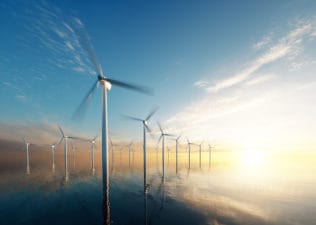Every company has some weaknesses, and Enerplus (TSX: ERF) (NYSE: ERF) is no different. Knowing those weakness and understanding how they could affect results will help an investor know if an investment is worth holding on for the long term. So, let’s take a closer look at areas where Enerplus’ weaknesses could affect its dividend.
Exposure to commodity prices
While all energy companies are exposed to commodity prices, Enerplus is especially exposed because of its outsized dividend. Because Enerplus needs to fund its capital program and its dividend, the company doesn’t have a lot of room for error when it comes to commodity prices. To mitigate some of this risk, Enerplus and other big dividend paying peers like Penn West (TSX: PWT)(NYSE: PWE) hedge a portion of production.
For the first half of this year, Enerplus has 70% of its oil production hedged at U.S. $93.98 per barrel. However, that drops to just 48% at U.S. $94.07 per barrel in the second half. That could become a problem if oil prices drop suddenly. For example, if the price of oil drops by $5 per barrel Enerplus would see its funds flow drop by $29.1 million, while its funds flow per share would drop by $0.14. The same goes for natural gas prices which Enerplus has hedged at less than 44% for the year, so if gas prices plunge so will Enerplus’ income and therefore its ability to keep paying its dividend.
Foreign exchange risks
In addition to its exposure to fluctuating commodity prices, Enerplus is also exposed to the fluctuations of the currency markets. As a Canadian company, Enerplus is specifically exposed to the fluctuation between the Canadian and U.S. dollar as its assets are equally split between the two countries. Because of this, a penny change in the exchange rate will impact funds flow by $8.2 million or $0.04 per share.
This exchange rate risk can affect more than just revenue from commodities as it can impact the amount of debt that’s borrowed in U.S. dollars. That’s why Penn West, for example, has a foreign exchange forward contract on its senior notes.
Another impact of foreign exchange fluctuations is on the dividends collected by American investors, as Enerplus pays its dividend in Canadian dollars. With the current direction the exchange rate has been heading it means American investors are likely to continue pocketing a little less of each of Enerplus’ dividends in the future.
Dividend payout ratio
Enerplus’s dividend, like Penn West’s, has been falling in recent years and while both payouts look to have bottomed, neither is expected to grow anytime soon. For Enerplus that means its $1.08 per share dividend rate from last year is about what investors can expect this year. However, a falling or static dividend is usually a sign of weakness for a company.
For Enerplus this weakness comes down to the fact that its adjusted payout ratio is just too high. The company continues to pay out more than 100% of its income. That said, its simplified payout ratio is improving as Enerplus grows its cash flow by improving its costs and being disciplined with its capital. That said, these two ratios need to continue improving as weakness here is a leading sign that the dividend is in danger.
Foolish bottom line
None of these weaknesses suggest that Enerplus is doomed to fail. While its dividend isn’t as secure as it could be, it would appear to be safe for at least the next year.






